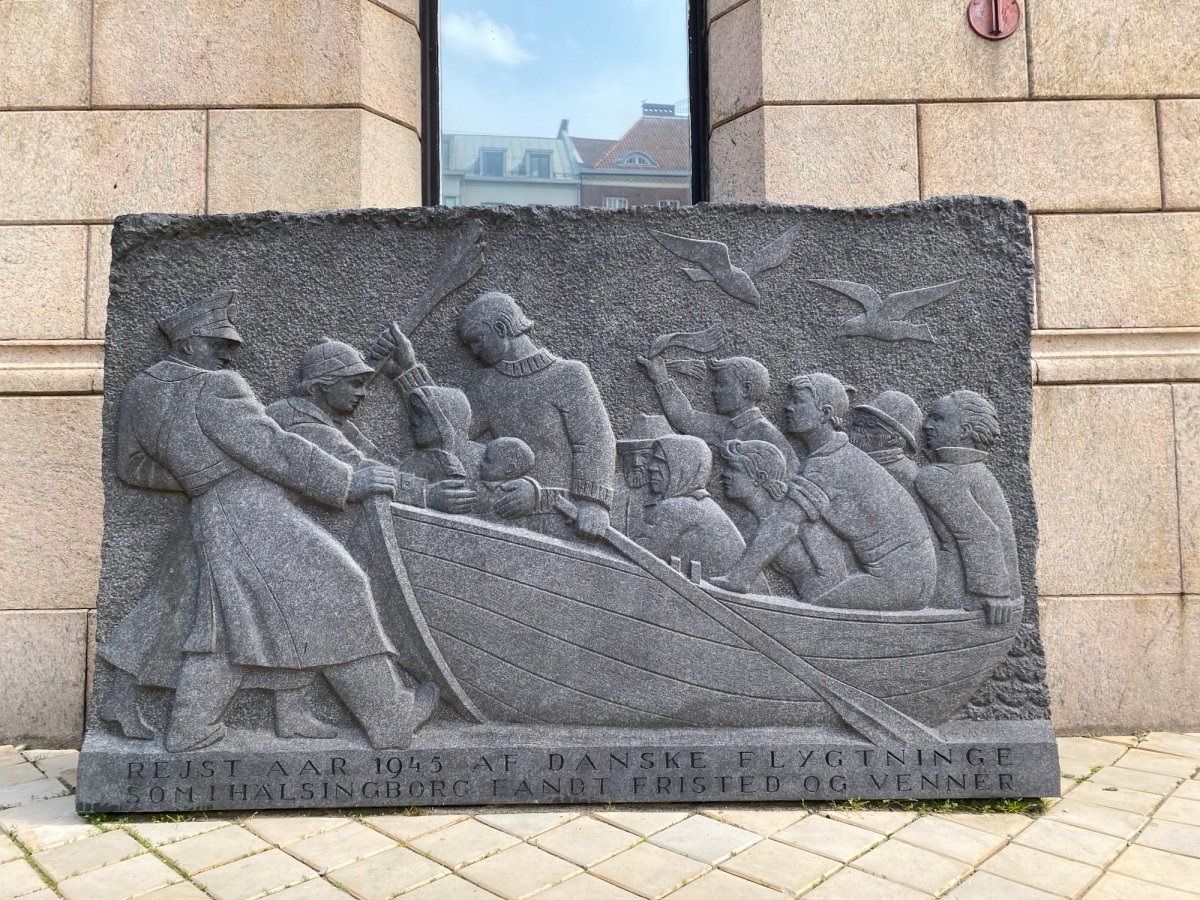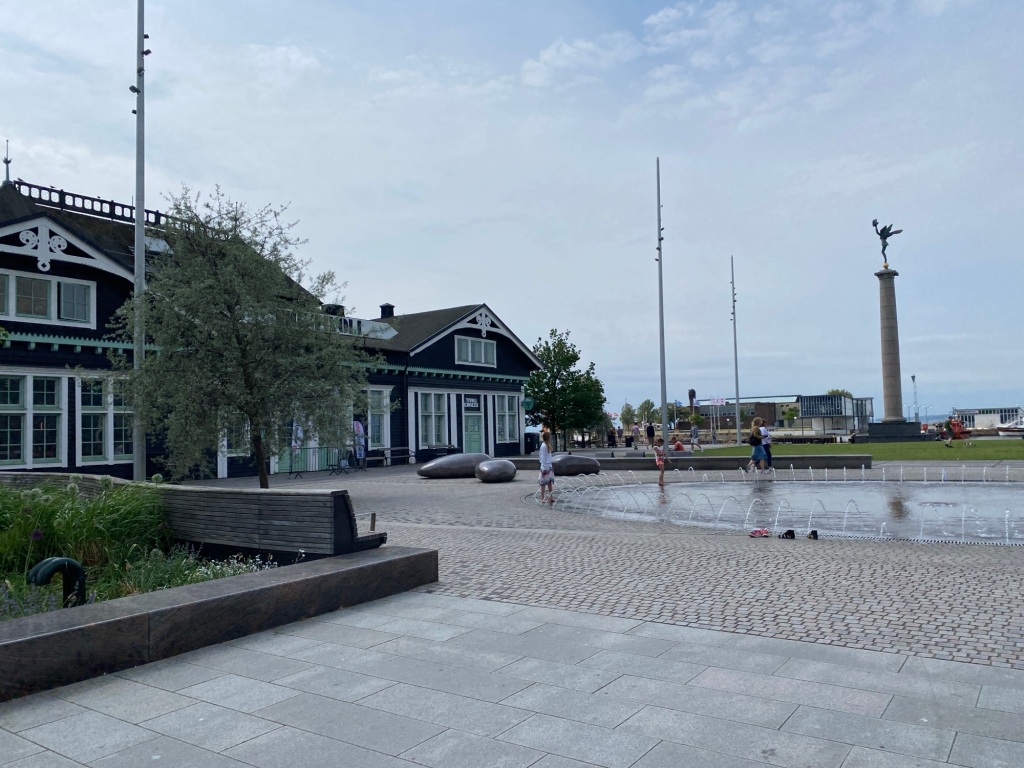
During WWII, Sweden became a saving place for people in Denmark who had to flee the Nazi occupiers. This granite monument commemorates the deed of Swedish authorities receiving the fugitives. That would be the Danish Jews and the freedom fighters. The memorial is from 1945 and was given by the ones who were helped.
From Wikipedia:
In World War II, Helsingborg was among the most important drop-off points for the rescue of Denmark’s Jewish population during the Holocaust. Adolf Hitler had ordered that all Danish Jews were to be arrested and deported to the concentration camps on Rosh HaShanah, the Jewish New Year which fell on 2 October 1943. When Georg Ferdinand Duckwitz, a German maritime attaché received word of the order on 28 September 1943, he shared it with political and Jewish community leaders. Using the name Elsinore Sewing Club (Danish: Helsingør Syklub) as a cover for messages, the Danish population formed an underground railroad of sorts, moving Jews away from the closely watched Copenhagen docks to spots farther away, especially Helsingør, just two miles across the Øresund from Helsingborg. Hundreds of civilians hid their fellow Danish citizens—Jews—in their houses, farm lofts and churches until they could board them onto Danish fishing boats, personal pleasure boats and ferry boats. In the span of three nights, Danes had smuggled over 7200 Jews and 680 non-Jews (gentile family members of Jews or political activists) across the Øresund, to safety in Sweden, with one of the main destinations at Helsingborg.[9]
Beside this memorial is a white marble plate about the Danish Brigade, which came here at the City Hall before departing for Denmark on May 5, 1945. They had secretly trained in Sweden to be able to help the Allied Forces in tackling the Nazi occupiers.

The identical building houses a Norwegian war memorial, which commemorates the Norwegian surviving Concentration Camp prisoners’ return from Germany during the last spring of the war in 1945.








